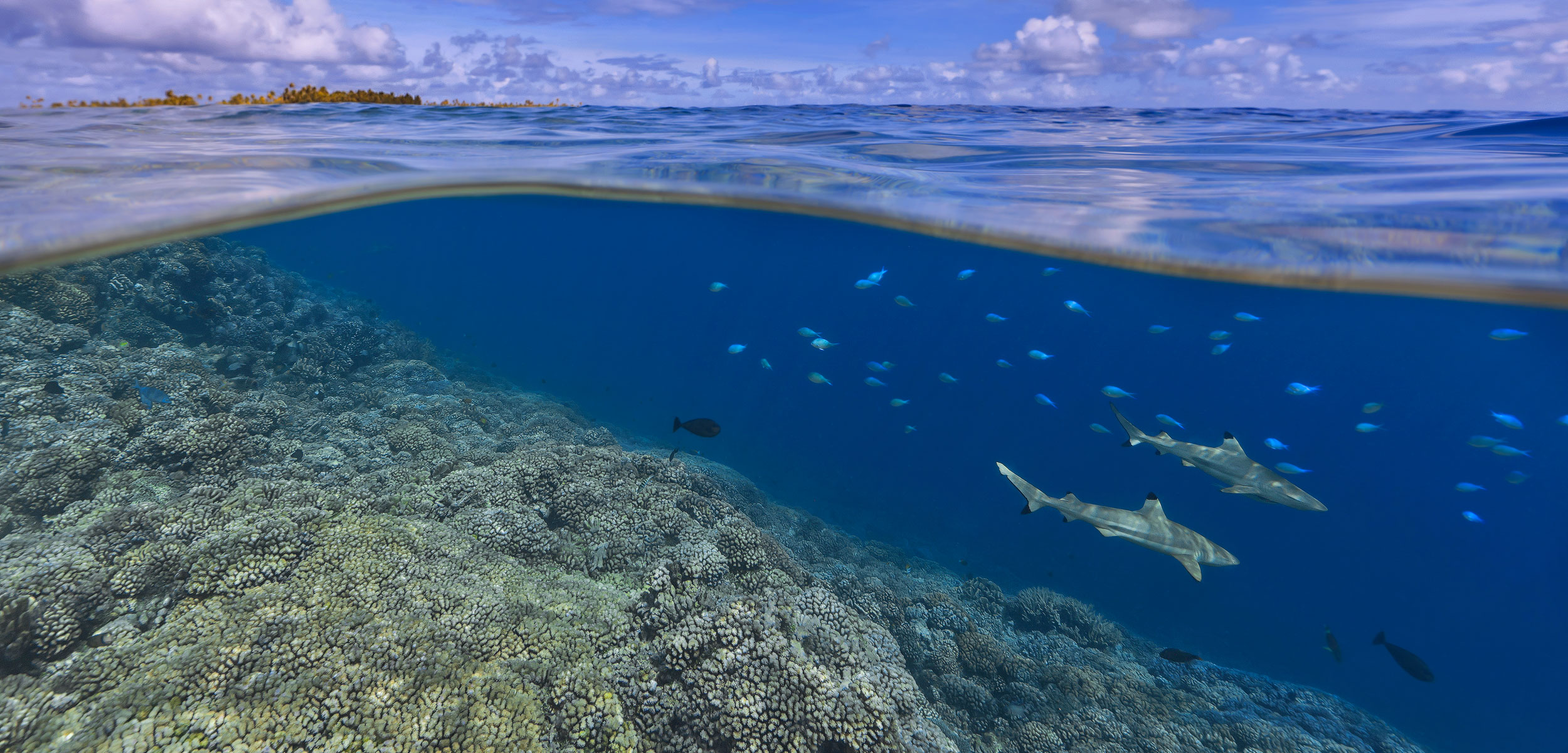Fragmented Protections Fail Top Predators
Small, disconnected marine reserves do little for wide-ranging reef predators in zones of high human impact.
Article body copy
Marine protected areas (MPAs), regions of the sea closed to harmful human activities, are effective in safeguarding coral ecosystems, which are often heavily used by coastal communities. But as new research shows, when MPAs are next to areas of high human activity, some of the benefits are lost—even in areas where fishers and others follow all the rules.
The vast majority of MPAs are coastal, and coastal MPAs are often smaller and more fragmented than those far out at sea. The median area of coastal MPAs is less than 10 square kilometers, while large offshore MPAs, such as the Marae Moana ocean sanctuary around the Cook Islands, cover nearly two million square kilometers. These small pockets of protection do help the coastal ecosystem, yet a team of researchers led by Nicholas Graham, a marine ecologist at Lancaster University in England, found that around areas of high human activity, MPAs do virtually nothing to protect top predators.
Graham and his colleagues applied a concept called “gravity” to develop a new way to measure human impacts on coral reef ecosystems. “Gravity is a proxy for human pressure,” Graham says.
The researchers calculated gravity by using two pieces of information: the human population in each one-square-kilometer box in a 500-kilometer radius around a given coral reef and the time it takes for people from each box to travel to the reef by road. Then, by combining gravity with fish population data on that reef, they were able to show how gravity affects fish biomass, or the presence or absence of top predators—primarily sharks, but also large jack, snapper, grouper, and barracuda.
Surveying conservation data for nearly 1,800 tropical reefs in more than 40 countries, Graham and his colleagues found a trade-off in small coastal MPAs: for reserves in high-gravity areas, fish biomass was about five times higher than in equivalent unprotected areas. However, top predators were virtually absent.
This is, in part, because large predators typically travel great lengths to hunt, Graham says. Coastal no-take zones only protect a fraction of their habitat. “The likelihood that the entire home range of an individual falls exactly within the boundaries of a protected area is quite low,” he says. When predators venture outside the reserve, they become fair game for fishing and hunting.
Elizabeth Madin, a marine ecologist at the University of Hawai‘i who was not involved in the research, says expanding coastal MPAs to offer protection for far-ranging predators would cut off huge swaths of the coast from human activity. Such an approach is simply not feasible, she says. Having overly large coastal MPAs would put unrealistic expectations on fishers, who rely on those nearby resources for food and income, and enforcing compliance would be difficult. This is especially true for poor communities.
Instead, to protect top predators, Graham suggests placing restrictions on specific types of fishing gear. “Fishers are more likely to change the way they’re fishing than to stop fishing altogether,” he says. This might include enforcing the use of nets with escape slots or other methods of lowering by-catch.
The big takeaway, says Graham, is that when it comes to designing MPAs and protecting marine ecosystems, there is no one-size-fits-all approach. “There’s always a tension between designing MPAs based on core principles—optimal spacing, size, and so on—and designing them based on the social and political context of a place,” he says.
Yet Graham has high hopes for this new metric of human gravity in refining conservation efforts. “It’s nearly impossible to accurately map fishing pressure on coral reefs globally. This metric of gravity is very novel in coral reef science,” he says. “It predicted fish biomass more accurately than any other way we’ve looked at in the past.”

